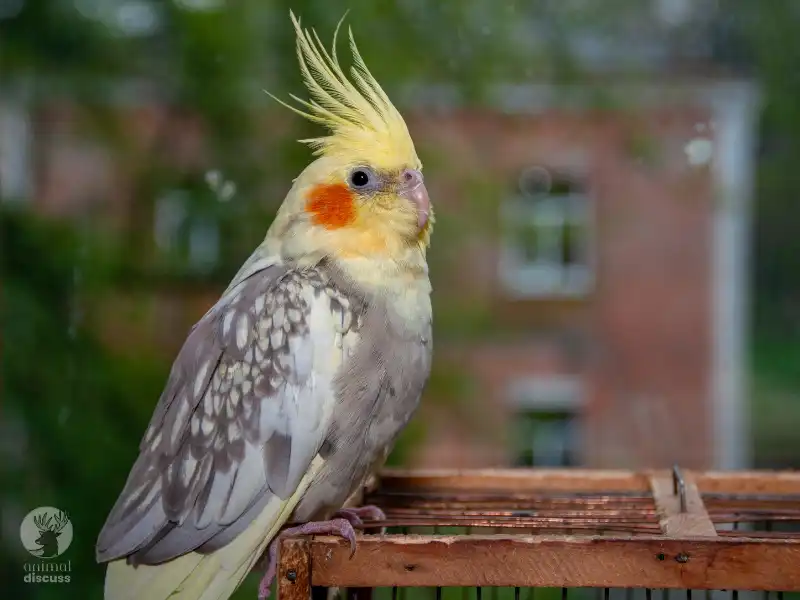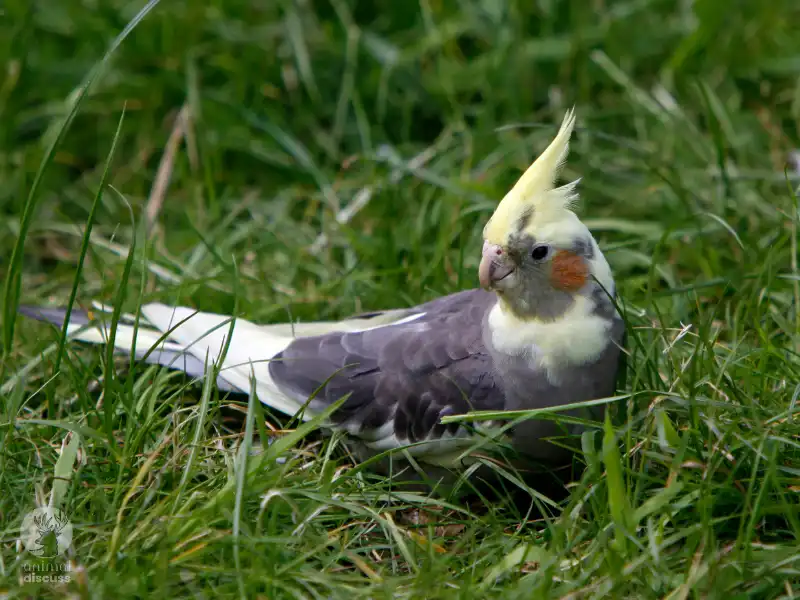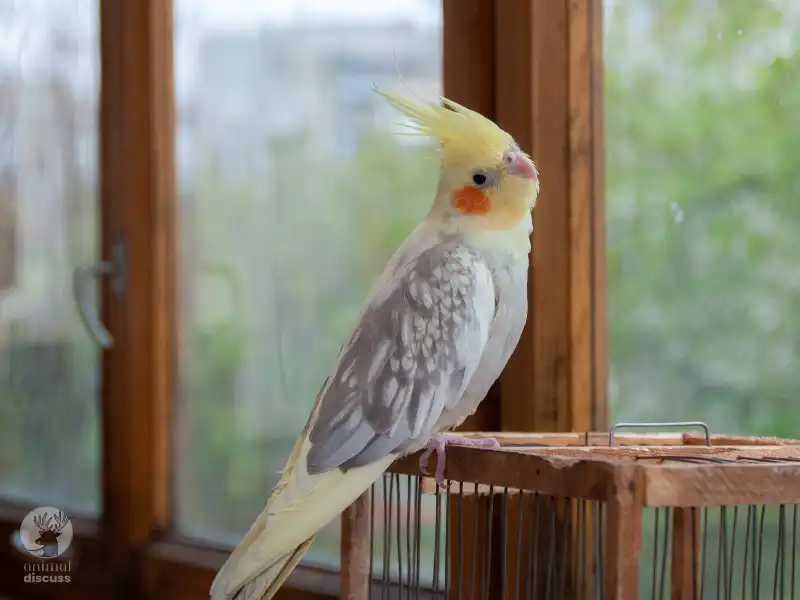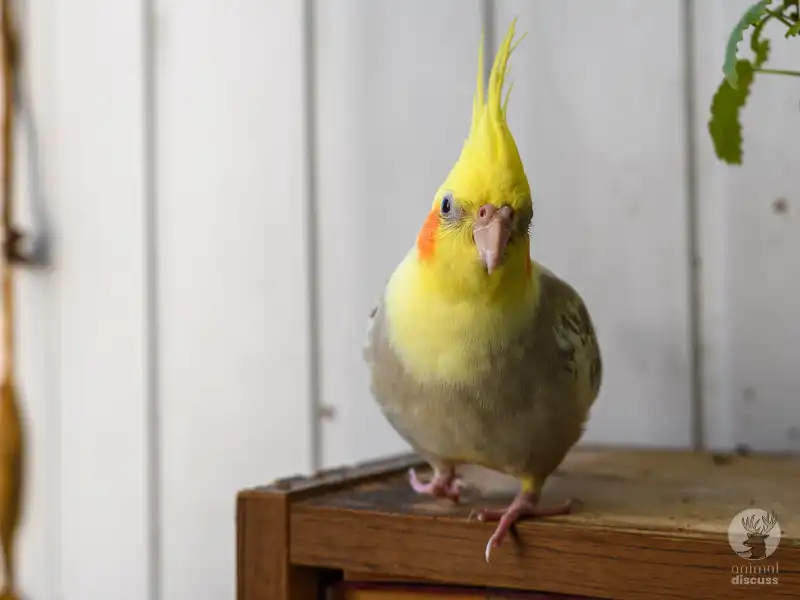Cockatiels are often beloved additions to our households. But they live in the wild too. Mostly they live in places that are close to water bodies.
But what kind of habitat do they choose? Well, they prefer mostly places that offer good visibility like open woodlands, savannas, etc. The reason behind choosing such places is to ensure adequate supplies of food and safety at the same time.
However, in this article, I will unfold both their habitat in wildlife and life as a pet. So you can get an in-depth understanding of their habitat. Let’s begin –
How Do Cockatiels Choose Their Habitat?
Now that we know that Cockatiels live in the wild, the first question that arises is how they choose their habitat.

Well, Cockatiels do not choose their habitat like humans but their habitat choosing includes a package of external factors.
Beginning with the first factor is the availability of resources like –
Food sources
Cockatiels eat seeds, fruits, and insects. They fly in flock to areas where there is a good amount of vegetation which gives them an adequate source of food consecutively.
Water availability
One of the main focuses of Cockatiels choosing their habitat is the presence of water bodies. Mostly places like rivers, dams, etc. are targeted for their habitat.
Nesting sites
Other than their food and water, nesting sites are their concern. Trees that give enough protection and visibility are chosen.
The flock will settle and create a suitable breeding population if the nesting site is safe and secured. Cockatiels do not like confined spaces. That is why their first and foremost choice of habitat is places that are open where they can fly higher.
And most importantly, these open areas give them the visibility to detect predators which is not possible in dense forests.
Suitable environment
However, as we are talking about the environment, Cockatiels don’t choose habitat over those areas where temperature is either too hot or cold. They can cope with temperature variations from 4.3°C to 43°C.
Social and communal nature
Lastly, Cockatiels love to live on a community basis. For which, they live in a societal pattern mostly.
Likewise, they mostly choose to stay in the place where their existing flocks are residing. It gives them safety and companionship through living in a flock.
What Are The Habitat Diversities And Distribution Of Cockatiels?
Cockatiels are social birds. They love to fly around with their flock wherever the key factors are fulfilled. These birds live mostly in arid or semi-arid countries but close to water.
Distribution of Cockatiels
Talking about their habitat, let’s find out where these birds are distributed and how they’ve adapted.
- Aussie heartland
Cockatiels are primarily found in mainland Australia. As mentioned above, they choose the habitat according to their types and preferences, which are food, nesting areas and water in an adequate amount.
- Limited locations
Other than Australia, they’re being introduced by humans in countries like Singapore, Europe, etc. but it is limited.
On a natural basis, they’re still not present in continents like Africa and many parts of Asia.
Habitat Types
You’ll be amazed to read that Cockatiels have diverse habitats in terms of their adaptability and preferences. Have a look –
- Woodlands
The first type of habitat for Cockatiels is woodland. The woodland offers a diverse menu of seeds, fruits, and insects. Moreover, in woodlands, there are creeks and waterholes which help these birds to survive.
One of the key aspects that is present in woodlands is easily available nesting sites for Cockatiels. That’s why they love to make nests in these areas as places like this ensure protection from predators.
They get protection from predators through taking natural camouflage and the scattered nature of trees which makes it hard to detect them. Plus, making a home in these woodlands gives the chance to take shelter and shade from harsh sunlight and unwanted rains.
- Grassland
Secondly, grasslands. This is not a primary choice because of not having a better balance for their habitat. Grassland has more or less access to foods, fruits, grasses, etc. compared to woodlands.

However, grassland is often ideal in the sense that it ensures the flier roams around, explores and escapes any potential threats. And the open space gives better visibility to detect threats.
Thus, as said earlier, the limited resources and having less support to get proper shelter from sunlight or strong winds make it a secondary preference for habitat.
- Wetland
Other than the woodland and grassland, Cockatiels even choose wetland as their habitat too. Wetland has the availability of water sources from swamps, lakes, etc. which is a relief for these birds in dry periods.
Along with that, this place has different vegetation and insects which works for the Cockatiels diet. Wetlands ensure seasonal opportunities for these birds to survive.
- Semi-Arid Scrubland
The fourth choice for habitat is semi-arid scrublands. Though there is some scarcity of water, the food sources are quite sufficient in this land. For the water, they mostly depend on water sources or man-made structures.
However, these challenging places provide nesting opportunities which helps them to somewhat separate themselves from predators.
- Suburban
Other than these natural habitats, they choose suburban areas too, like parks, gardens and even your house balconies. As the place offers diverse food sources, like seeds, fruits, etc.
Most importantly, these places give them human interaction and as a social bird, cockatiels love to have this companionship offered by people.
How Does The Habitat Of Cockatiels Influence Their Diet?
Just like any other animal, Cockatiels choose their habitat keeping the availability of enough food resources assured.
The habitat preferences I’ve mentioned earlier all more or less can provide seeds, insects, vegetables, fruits, etc. All this habitat has this kind of food available which fulfills their nutritional benefits.
As said earlier, Cockatiels are fussy eaters, but they can adjust their diet to compensate for food source fluctuations. For instance, during dry periods, when water is less available, they consume insects that balance moisture content.
This intelligent bird understands the seasonal shifts and tries to adjust accordingly. This is how their habitat influences their diet.
What Habitat Challenges Do The Cockatiels Face?
Cockatiels are social and adaptable birds but sadly, they face numerous challenges within their natural habitats. Let’s see what kind of challenges they face.
Environmental and Climatic Challenges
As we already know Cockatiels live in woodlands, they also live in grassland, wetland, and semi-arid regions due to nesting opportunities. But these habitats provide comparatively less protection when it comes to any natural calamities or in any adverse weather.

For example, if there is a heavy storm or cold, it will create a disastrous situation for them to survive. Thus, this climatic change will hamper their way of life.
Moreover, these natural calamities impact the food and water resource availability of Cockatiels. Hence, they had to immediately migrate to a new place.
Human Invasion
Other than the natural changes, human invasion like clearing land for agriculture, urbanization, and infrastructure formation impacts the habitat formation of a Cockatiel.
Due to having so many challenges, they cannot ideally create their own habitat in urban areas. As there is always a shortage of space, often it becomes competing with other animals for resources.
Diseases
You know that the number of pesticides and other chemicals has increased in agriculture. As a result, it gets very dangerous for Cockatiels to eat food sources that are already contaminated. This can lead to different diseases which may impact their health, such as fatty liver diseases.
Accordingly, if one bird in a cage has caught psittacosis disease, try to keep the infected one separated from the healthy ones. As it may lead to the spreading of diseases to other healthy ones.
Predation and Competition
Lastly, one of the biggest challenges they are facing is choosing a habitat safe from their predators and competition. Though they live in mostly flocks but still chose to not have one common space for collecting their resources.
Likewise, the areas where the numbers of foxes and cats are more, the higher the risk for Cockatiels, especially for the younger ones. That’s why they need to be very picky while choosing their habitat.
How Do Cockatiels Master Their Habitat With Three Key Strategies?
Cockatiels are resilient and vulnerable at the same time. Therefore, they have been able to adopt different strategies to overcome the challenges of their habitat.
This is why, IUCN has listed this species as the least concern (LC). But till now, there are some hurdles that threaten their existence.
Let’s look at their three adaptive strategies to those threats –
01. Finding reliable water sources – We know now that water plays a significant role in Cockatiel’s life. But finding this water in a dry environment is skeptical.
At that time, Cockatiels utilize rivers, man-made structures, etc. to quench their thirst. Even more interestingly, they can extract moisture from particular seeds and plants to mitigate their thirst.
02. Changes in diet – Till now we’ve noticed that this bird is a picky eater whose primary source of food is seed. However, as they live in diverse places, they can adapt to different foods based on availability.
They eat fruits, insects, leaves and even sometimes bark in order to remain alive in that particular habitat.
03. Lives in a group – Cockatiels love to communicate and live in a group. One of the reasons to stay in a group is to get several eyes and protection from predators. This is obligatory when they have a young one in the nest.
Other than that, this residing in flocks also helps in finding a suitable place for habitat.
These are some adaptive strategies followed by Cockatiels when they face challenges, be it from nature or from human beings.
How To Make Sure A Suitable Habitation For Your Pet Cockatiel?
For now, I have discussed how this bird has thrived and survived in the wild. But a huge number of Cockatiels are living in our homes as pets for a longer span of time.
Well, if you’re someone who wants to pet this docile bird, the first thing you need to keep in mind is creating a habitat that is comfortable enough and has access to the resources. Otherwise, they’ll not be able to survive.
Let’s have a look at how to make a cage suitable for your pet Cockatiels –
- For a single Cockatiel, it is considered that the cage should be at least 24x18x24 (Long, Wide, Deep) inches. As Cockatiels love to stretch their arms, there should be adequate space for that.
- But the space between the cage’s bars should not be more than half-inch. Otherwise, they can escape or get stuck into the bars.
- Do not make a habitat with wood for your loving pet. As it can release toxic chemicals or can get rotten which can cause health problems for the bird.
Cockatiels In Captivity: The Optimum Habitat For Them
In order to keep them in a cage, it is mandatory to ensure their comfort. Let’s have a look at some factors that every pet parent must follow.
- The cage should be ideally placed where the temperature is optimum (65-80 degrees Fahrenheit).
- Other than assuring the temperature, one vital thing needs to be kept in mind, which is cleanliness. That can be done by setting up a base that is made of metal and can be easily removed if necessary.
- In this way, the food that will fall under the feet of the bird can be cleaned. Also, you can place a piece of paper underneath their feet. When it’s dirty, change the paper so that the entire cage will remain clean.
- Placing them beside a big window or in the kitchen is a big no. As the outside area has so many noises which can disrupt their normal life.
- As they are social birds, put them near somewhere they can see their owner and the other family members for better interaction.
- Moreover, keep in mind that your other pets like cats or dogs are not able to access your Cockatiel.
- If you’re someone who cannot give them complete time, keep them in pairs so that they can stay in that cage accompanied, not alone.
- Providing them with a habitat that has a proper light system is quite important.
Cockatiels Habitat: What Accessories Are Better For Them?
The first thing that needs to be added in their accessory section is perches. It should be long but not so wide in diameter that the bird cannot hold it. By including these particular perches, it’ll help them to have a definite foot shape.
Also, keep in mind that perches are important to keep your Cockatiels healthy as it will help to not get their feet soar. However, keep it separate from other accessories so that they don’t get any serious injuries.

Accordingly, giving them different toys to play with will keep them away from any kind of boredom and loneliness. As you know, if they get bored or feel alone, they can end up doing self-harm like plucking their feathers.
However, make sure to give such toys which they cannot eat. It can be of any material like wood, plastic, etc. Plus, keep them in changing orders so that the birds don’t get bored.
Lastly, when you serve their food like seeds and fruits, always serve it in one dish. And there should be another dish for drinking water.
Now, if you are planning to keep more than one Cockatiel in a cage, you’ve to work a little harder. And create different eating and water pots for them so that they cannot get into any kind of fight.
How To Clean Cockatiel’s Habitation In Captivity?
Well, Cockatiels get angry and hiss if proper care is not taken. And it’s not only about giving them food to eat; rather, it’s about their hygiene. As a pet parent, you need to keep that in mind.
Now, here are the steps you can follow to give them a clean and healthy environment –
Step 1 – Move your Cockatiel into any other place before starting the cleaning. Otherwise, it might bite you.
Step 2 – Remove all the things that are placed in the cage like toys and other accessories.
Step 3 – Buy a bird habitat cleaner to clean the cage. Take a dish, pour the solution, and soak the toys in the solution of the cleaner.
Step 4 – After washing all the accessories, dry them in sunlight or take an old cloth and wipe them. It is obligatory to clean them in such a way that there is no smell or residue left. Otherwise, your pet birds will get irritated.
Step 5 – Place a new paper underneath. Try to set the entire cage just like the way it was.
Step 6 – Lastly, bring your docile social bird back into its healthy habitat.
How Can We Contribute To Preserving The Cockatiel’s Natural Habitat?
Be the habitat in wildlife or in your home as a pet, it’s our duty to preserve cockatiels’ habitat. So our nature can remain balanced.
Beginning with, forming an eco-friendly society can be helpful in this case. People should use eco-friendly products, reduce the usage of carbon, and stop cutting down trees.
We can also donate to organizations that are actively working day and night to ensure the habitat protection of birds.
Most importantly, we need to spread awareness among friends and family. We can do this by educating people about Cockatiels’ habitat challenges and vulnerability.
Besides, a revolution of planting more trees in our surroundings could be another effective way to preserve this charming bird’s habitat both in captivity and wild. Because it will give Cockatiels the resources they require.
Frequently Asked Questions
Here are a few more additional questions you might be asking regarding Cockatiels’ habitat.
01. Do Cockatiel’s habitats need sunlight?
Yes, they do. Cockatiels are spontaneous birds they need to be under natural light or under full spectrum lighting to synthesize vitamin D. For the proper balancing of calcium and phosphorus levels, it’s a must.
02. For habitation, can I put my Cockatiel in my room?
If your bedroom has no access to an air conditioner or kitchen, you surely can put it in your room. But it is definitely better to put a Cockatiel outside the bedroom. As it helps them to interact and not get possessive over only their owners.
Conclusion
We have reached the end of our Cockatiels’ habitat. As they are friendly and social mimicry birds, they can live both as pets and in the wild. All they need is access to their key resources and safety from potential threats such as cats, foxes, etc.
As deforestation and more buildings are being made, their habitat in the wild is under threat despite being least concern species. In order to preserve their habitat or themselves, it is high time to take the necessary steps mentioned above. Hope this article has helped you enough to understand Cockatiels’ habitat.

